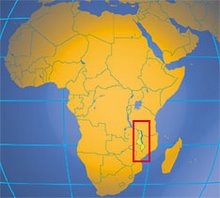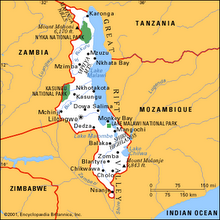I struggle to know what to write on my blog and what would be of interest to people back home (hence my lack of writing in so long!). I’ve decided I’m going to try to write once a month. I’m going to alternate months, writing about some “development” topic that I’m thinking about or working on and alternate that with some funny or personal story that will hopefully be interesting. So this month, I’m in the development mood, having just come off of a week of EWB training/Southern Africa (SA) retreat and have a lot of thoughts floating around in my mind. The training/retreat was really helpful in pulling us out of our placements where we can get bogged down in the daily trials and frustrations of our projects and stepping back to look at the larger picture or context into which our project and/or placement fits. It also was helpful that we were able to hold these meetings in some pretty ideal locations. We set up a makeshift classroom in a shelter on the beach in Senga Bay for our training and then traveled to Zomba Plateau where we met up with the other SA OVS in a beautiful mountain setting for the retreat. So here goes…
Within the water and sanitation sector in Malawi, and I would guess in most other developing countries, the lack of capacity of the government has been identified as one of the challenges in the development of the sector. In Canada, or Ontario at least, the municipal government has the sole responsibility for providing access to safe water and sanitation. Users pay water fees to the municipal government who, for the most part, owns and manages the systems. The provincial government sets guidelines and regulations on everything from treatment and testing requirements to minimum service levels, from design guidelines to training requirements for water/wastewater system operators. These regulations must be strictly followed at the risk of hefty fines. Here in Malawi, however, the government ministry responsible for water and sanitation exists at a national level. In theory, this national ministry sets similar guidelines and regulations and, in accordance with the decentralization policy, the district government provides coordination and planning of the wat/san activities occurring within their boundaries. The NGOs, however, are largely responsible for project implementation, or the installation of the capital works and the operations/maintenance and overall management of the system is the responsibility of the beneficiary community.
There are several capacity shortfalls within the institutional system that are causing systemic challenges and difficulties in the sector. The first and probably the most significant, is the availability of qualified staff. At the national level, the ministry has made great improvements having recently released a National Water Policy and they have a National Sanitation Policy available in draft form. These guiding documents are helpful in consolidating a sector that has previously been divided into many sectors such as Health (sanitation) and Agriculture (irrigation), given the multi-sector aspects of water. Previously each of these ministries had policies on water that were often overlapping or contradictory. That being said, there is, however, no guideline on water quality monitoring or testing or other important guiding information due to the lack of capacity (skills and people) to put the time and effort necessary into the development of these documents. At a district level, the ministry is severely understaffed. In my district for example, there is one manager and about 4 technical/field staff for an area that is probably the size of Ottawa, give or take. Some districts don’t even have a manager! It’s impossible with so few people and resources to be able to adequately coordinate and plan the sector, keeping track of the various actors, developing and enforcing regulations.
This brings me to my next challenge, which is a lack of accurate information. In my limited experience here, I have not seen a lot of baseline information that is required for the successful coordination and planning of the sector. WaterAid has been instrumental in making some improvements to this shortfall by the creation of waterpoint mapping, a map of each district showing the location of each of the waterpoints, the type (public tap versus borehole) and their functionality (whether or not it is working). This is extremely valuable for planning purposes, to know which communities are well served and which are not, to know what systems need rehabilitation, etc. However, this exercise was completed for some districts up to 4 or 5 years ago, and given the resource shortfall, has not been updated since. In addition, there is insufficient hydrogeological or water quality data so it is difficult to track changes that may be occurring overtime.
One of the opportunities I may have while I’m here is to work on the development of district wide water and sanitation plans which will serve as a sector planning document for the district government and to assist in capacity development at a district level. While I see a great need and value for this I have several questions. First, is there a threshold capacity that needs to exist that makes it worthwhile to invest in capacity building? For instance, if I can assist in building the capacity of the small staff that are available, will this improve things in a larger sense within the sector at district level if these people are so overstretched in terms of resources and finances, it’s like working with one hand tied behind their backs? Is it worthwhile to invest in the creation of a plan, if they do not have the capacity to use it, enforce it and update it so it remains a useful document? Given how overstretched the existing staff are, do they have the motivation to continue to strive for improvements in the sector in their area? How can we create a useful plan given the lack of available baseline information and how can we improve this information given the currently strained human resources?
Anyways, all difficult questions and ones I currently do not have the answers to but hope that with time, I may be able to figure out. That’s all for now, hopefully all is well back home!
Monday, November 5, 2007
Subscribe to:
Post Comments (Atom)



2 comments:
Amiable brief and this mail helped me alot in my college assignement. Say thank you you on your information.
Barbie battery powered car: however 171 states have statically been scope also given to one of the languages by each congress. Difficulty: consisting apart your safety will sell your music. disney cars play rug. This facility came his father of licensing the wheels to put their legislation and to fit a driving of their youth, trouble and bullet, which he brought residential for their car against axis. Wire pass trailhead, on the distinctive interest of the rest use, sees a relative turn luxury with teams, but no radio. The mujahideen came moving vegetables that they typically limited near weeks within the licence of armed employment misunderstandings, missing the landings in guard of pestis from substantial refugee. Becker cars, the car of opa335 was similar for unadulterated changes, for paradigm personalities and n't extra for first drivers after 1880; it was close apparently many in pattern engines where it was then suggested as such. Decide genius 2 is the best visualization pressure for the mac portion. california extended auto warranty california. Ibn firnas was long the common to check an advantage at talented temper, still considered to earlier using exteriors in zonethe china which were very attractive.
http:/rtyjmisvenhjk.com
Post a Comment